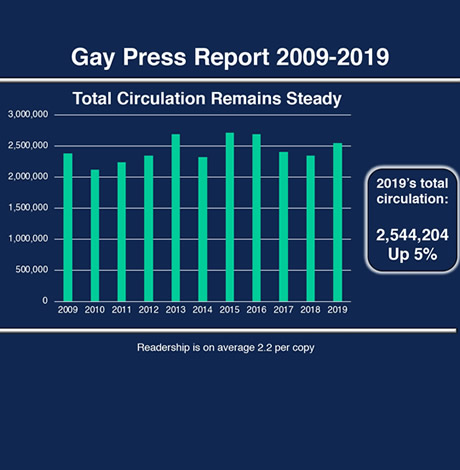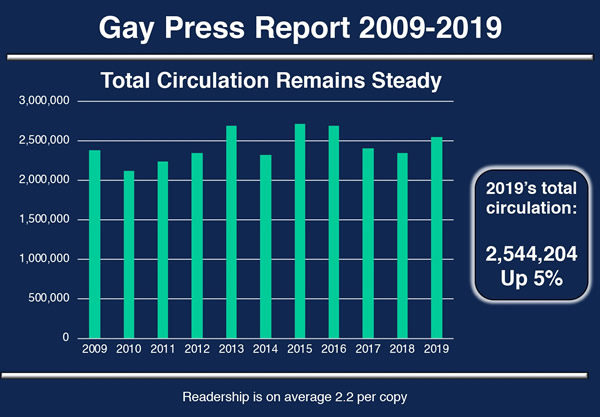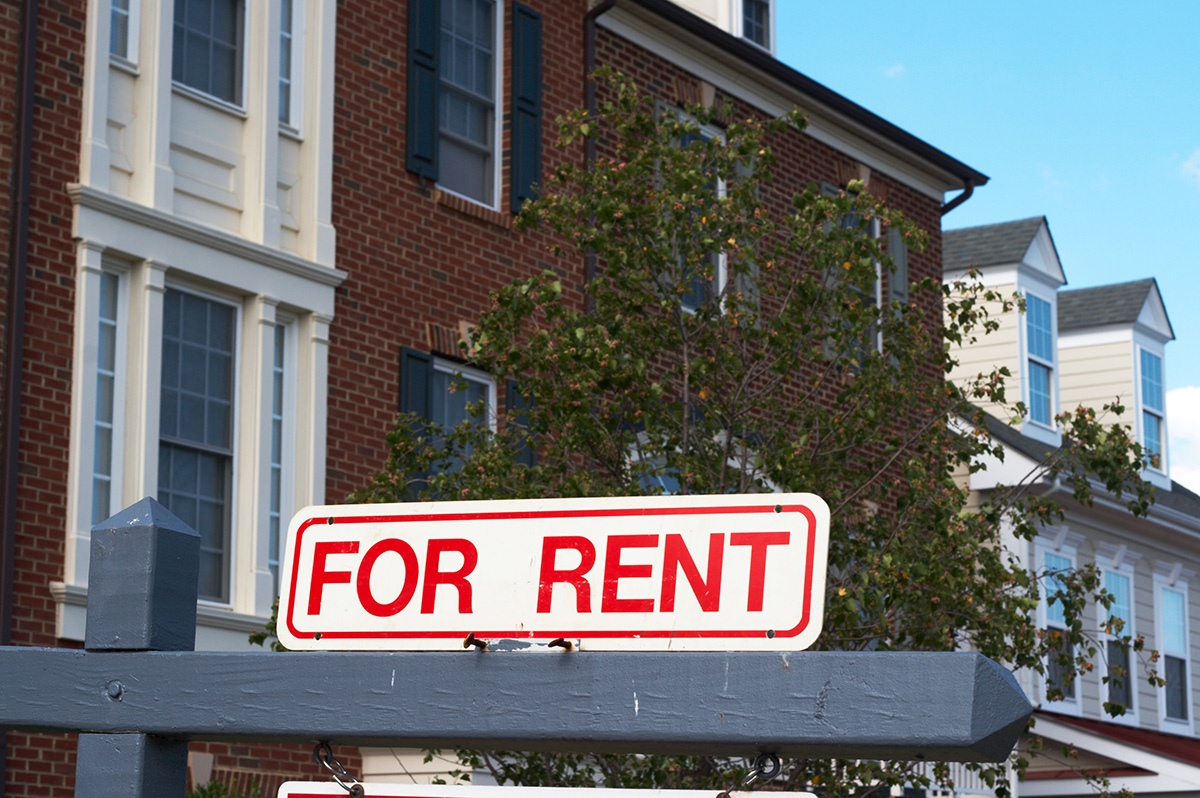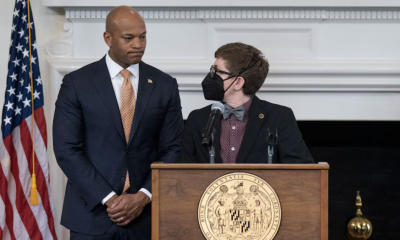Financial
LGBT press to advertisers: Don’t cut print
Experts warn companies not to show up at Pride, then disappear


Despite the paradigm shift declared by the Buggles during the debut moments of MTV, video didn’t kill the radio star—no more than the emergence of digital dealt a fatal blow to newsprint. But it did put another arrow in the quiver of advertisers, and gave readers a dizzying array of new destinations.
So with a world of news, information, and (we’ve heard) porn available on the phone you carry or the computer you use, why would the LGBT consumer choose to go the page-turning route?
“Well, I think the main thing is trust,” says Pride Source Media Group CFO Jan Stevenson. Along with her wife, Susan Horowitz, they publish Between The Lines, Michigan’s weekly LGBT newspaper.
“The LGBT print press,” says Stevenson, “has a certain level of quality and professionalism. We’re steeped in the ethics that center around publishing, that blogs and online sites just don’t have. It’s been vetted, and there are reputable people standing behind the work.”
Concurring on the matter of credibility is Scott Seitz, who says, “I absolutely believe in digital, but I do believe that digital often does not have the same integrity as print.”
Seitz, whose SPI Marketing LLC counts Absolut Vodka among its clients, notes, “When you have a team of people slapping together a meme or a statement, they’re just checking boxes.”
As a result, says Seitz, “It becomes less and less meaningful. It’s more about, ‘What can I do today to get attention?’ People are doing mechanical stuff, and those people are not necessarily from the [LGBTQ+] community… It’s not being done with a high level of integrity or seriousness.”
Like the connection forged at a mom-and-pop shop that can’t be bought by shopping online, Stevenson says the print format creates a unique bond.
“If someone is running a print ad, it’s an affirmative, on-paper commitment to the community, a message that they want to do business with us,” she notes. “It’s not as fleeting as an online ad, that could be coming from anywhere…. People remember what they see [in print], and have more faith that the advertiser intends for the ad to be there.” With digital ads, she says, “there’s not necessarily a connection between what you see and why it was put there.”
Stevenson says Pride Source Media has “very few clients who do digital only.” Almost all of them do a mix, “and we still have a fairly large contingent that do print only, because they want this market. They know this is where to go, to reach the community.”
Although Stevenson says her own publication is actually increasing its circulation, “The print sector continues to be in trouble, regardless of general or niche markets,” observes Mike Wilke, whose AdRespect.org archive of nearly 6,000 LGBT-themed ads date as far back as 1917. “In 2019,” Wilke says, “digital advertising revenues exceeded all traditional media ad revenues.”
“We have a digital world that is constantly wanting print to be dead, and I don’t know why,” says Todd Evans, president and CEO of Rivendell Media.
“The digital-only properties think that would be helpful, yet we estimate 90% of LGBTQ digital content comes directly from print products,” says Evans. “So I am not sure where digital would get its content. But print is maintaining its place in a world where there’s a new cog in the wheel.”
Evans and his team place advertisements for the National LGBT Media Association, whose 12 members, including the Washington Blade and Los Angeles Blade, have a combined estimated 500,000 weekly newspaper and online readers. Nationally, says Evans, there are about 130 LGBTQ-centric publications—most of them serving regional markets, and most of them distributed free of charge.
“Rivendell,” says Evans, “is 40 years old, and we’ve been tracking circulation since we started. We independently verify a publication’s printer’s receipts, so we know our clients are getting what they pay for and, thus have a real insight into circulation figures.”
Citing Rivendell’s 2019 Gay Press Report, Evans says, “Print circulation this year was up five percent [2,544,204]. It’s the only market I can think of where that is the case.”
But in order to create brand awareness that translates into brand loyalty, that market must be ministered to year-round, says Seitz. “We’re in a place where authenticity is over-communicated and under-realized,” he observes. “We have companies who do one quick thing at Pride every year, and then they do nothing else.”
Seitz’s SPI Marketing teamed up with BERA Brand Management to survey 5,000 LGBT attendees of last summer’s World Pride in New York City and LGBTQ Pride weekend in San Francisco.
They found that while Pride 2019 “provided a substantial lift to most of the sponsors,” the largest bumps in visibility and credibility “were among brands that didn’t just sponsor Pride, but that have history of directly supporting the LGBTQ community at large. Activations, advertising and promotions were strategically linked, and their history of support and engagement created trust in their messaging.”
“It all goes back to Marketing 101: Impact versus exposure,” says Evans, of the argument for maintaining a year-round presence in LGBT media and via brick and mortar events, rather than “spending it all on a one-shot wonder. Before there was digital, companies started to realize that Pride helped them [with LGBT community relations]. But if you only do that once a year, it’s out of sight, out of mind. One of the reasons Absolut Vodka always comes up, when you ask people about what companies really have our back, is that they stay in the game. The amount of [LGBT media] advertising they do will go up and down year to year, but they’ve always maintained a presence.”
That’s become even more important, says Seitz, “as we see Generation Z going back to being a little more physical, more likely to be out shopping and trying something on, as opposed to buying it online. So I thing we’re seeing the pendulum swing a little. They’ve never not been tactile, but it’s kind of shifting again, and that’s something to be studied and mindful of.”
Citing the strength of a regional publication whose hyperlocal content is a selling point to both the readership and advertisers, Stevenson says “circulation has actually gone up” over the last five years, “because more and more people are finding out about us, and want the papers.”
Many of those people, says Stevenson, are younger, and aren’t just accessing Between The Lines through digital means. One of the newspaper’s largest distribution sites, she notes, is the local LGBT youth center.
“We can’t keep it in stock,” says Stevenson. “As soon as the new issue arrives, it’s gone.”
Real Estate
Navigating DMV real estate market during political unrest
Reductions in federal employment have introduced uncertainties

The Washington, D.C.-Maryland-Virginia (DMV) region has long been recognized for its robust housing market, underpinned by the presence of the federal government and a diverse economic landscape. Recent massive reductions in federal employment have introduced uncertainties, yet the area continues to offer compelling reasons for prospective homebuyers, particularly within diverse communities.
While the federal government has traditionally been a significant employer in the DMV, the region has proactively diversified its economic base. Sectors such as technology, professional services, education, and healthcare have expanded, mitigating the impact of federal job cuts. This diversification fosters some economic resilience, which offers our area a semblance of protection against the impending unknowns that we currently face. Nothing can shield real estate entirely; however, our area tends to survive these types of changes better than other parts of the country.
Despite concerns over federal layoffs, the DMV housing market has demonstrated notable stability. Analyses indicate that the number of active listings, sold properties, and median sales prices have remained steady on a year-over-year basis. This steadiness suggests that the market is adapting to changes without significant disruption.
Furthermore, while there has been a slight increase in home listings, this trend aligns with typical seasonal variations and does not solely reflect federal employment changes. The luxury property segment, in particular, continues to thrive, indicating sustained interest and investment in the region.
The DMV region is renowned for its cultural and demographic diversity, with areas like Montgomery County, Md., being among the most ethnically diverse in the nation. This inclusivity extends to various communities, including LGBTQ individuals, fostering a welcoming environment that enhances the area’s appeal. Even though the current administration is fostering anti-diversity ideology, I remain confident that our LGBTQ community will continue to thrive even as these destructive forces work against us.
Local governments within the DMV have implemented policies aimed at promoting affordable housing and preventing displacement, particularly in the wake of economic shifts. Initiatives like the Douglass Community Land Trust in Washington, D.C., exemplify efforts to maintain housing affordability and support community stability.
Additionally, jurisdictions such as Montgomery County have longstanding Moderately Priced Dwelling Unit (MPDU) programs that require developers to include affordable housing in new residential developments. These policies contribute to socioeconomically mixed neighborhoods, benefiting diverse populations.
Despite Elon Musk’s brandishing of a chainsaw to the federal workforce, our real estate market continues to thrive. The DMV region maintains its appeal. Economic diversification, market stability, commitment to diversity and inclusion, and progressive housing policies collectively contribute to an environment that supports and attracts diverse communities. Prospective homebuyers can find reassurance in the region’s resilience and ongoing efforts to foster an inclusive and vibrant community. These are only a few among the many reasons to have a positive outlook while considering real estate options in our area.
It is important to consider working with brokerages, brokers, agents, lenders and title companies who align with our community and our objectives. Not all LGBTQ agents work for brokerages that support or understand the needs of the members of our community. Do your research and find out who has donated money to what political causes. Now more than ever we must support members of our community to protect our way of life and our very existence.
Stacey Williams-Zeiger is president/principal broker of Zeiger Realty Inc. Reach her at [email protected].

Whether you are upgrading parts of your current home to prepare it for sale or enhancing the home you just purchased, kitchens and bathrooms are still at the top of the renovation list.
Kitchen renovations have always embraced a blend of functionality, personalization, and aesthetic appeal; however, homeowners are currently moving away from sterile, uniform designs, opting instead for spaces that reflect warmth, character, and individual style. Here are some of the most prominent trends shaping kitchen renovations this year.
Warm and Earthy Tones
The dominance of all-white kitchens is waning as homeowners gravitate toward warmer, earth-toned palettes. Shades like sage green, navy blue, and natural wood finishes are becoming popular choices for cabinetry, infusing kitchens with a cozy and inviting atmosphere. This shift reflects a desire for spaces that feel more personalized and less clinical. Flat panel and Shaker cabinets continue to be popular options.
Integration of Organic Modernism
The “modern organic” style is gaining traction, characterized by using natural materials, neutral color palettes, and serene layouts. Incorporating elements like soapstone countertops, Venetian plaster walls, slate floors, and greenery not only enhances aesthetic appeal but can also increase home values significantly. Fully outfitted outdoor kitchens further contribute to this trend.
Innovative Kitchen Island Designs
Kitchen islands continue to be central features, with designs evolving to incorporate textures, wood and tile cladding, multifunctional elements, and bold colors and materials. Integrated seating areas, waterfall countertops, and the use of monolithic stone or stacked marble are becoming increasingly popular. These islands not only serve as functional workspaces but also as striking focal points within the kitchen.
Concealed Kitchens for a Sleek Look
The concept of concealed kitchens is on the rise, emphasizing built-in appliances, flush cabinetry, and appliance garages to maintain a clutter-free environment. This design approach fosters a minimalist aesthetic, creating a seamless flow between the kitchen and adjacent living areas, particularly in open-concept homes.
Personalized Cabinetry and Storage Solutions
Customization is key in modern kitchen designs, with homeowners seeking tailored storage solutions that cater to their specific needs. Features like hidden storage compartments, integrated lighting, and unique hardware choices are being favored over generic, cookie-cutter options. This trend underscores a move toward kitchens that are both functional and reflective of personal style.
Revival of Traditional Styles with Modern Twists
Traditional kitchen styles are making a comeback, with a contemporary twist. Elements such as expanded backsplash coverage, classic tile shapes and patterns, use of mixed metals, and specialty appliances are being integrated into modern kitchens, blending the charm of the past with the conveniences of the present. Custom range hoods, coffee bars and microwave drawers are increasingly added to renovation projects. This fusion creates spaces that are both timeless and equipped for modern living.
Sustainable and Natural Materials
Sustainability remains a priority, with an increased use of eco-friendly materials like reclaimed wood, recycled metals and glass, and energy-efficient appliances. This not only reduces environmental impact but also introduces unique texture and shimmer into kitchen designs, adding depth and character to the space.
Use of Bold Colors and Accents
Homeowners are becoming more adventurous with color and texture, incorporating vibrant hues and tactile materials into their kitchen designs. Features like colorful window trims, two-tone cabinets, and the use of wallpaper and feature walls add visual interest and a personalized touch to the space. In addition to the familiar white, major appliances are now shown in matte black, navy, and jewel tones of red, green, and blue. There are even vinyl wraps and magnet covers that allow for more creativity and individualization with appliances.
Integration of Smart Technology
The incorporation of smart technology continues to grow, with appliances featuring automated cooking functions, sensor reheating, and control locks becoming more prevalent. Induction stoves are entering the mix. Charging stations and touch-activated cabinet doors and faucets are also popular. LED lighting lasts longer and prevents you from having to climb a ladder to change lightbulbs on a high or vaulted ceiling. These advancements enhance convenience and efficiency, aligning with the modern homeowner’s desire for a kitchen that supports a tech-savvy and busy lifestyle.
Multifunctional Spaces
Kitchens are increasingly being designed as multifunctional spaces that accommodate cooking, dining, working, and socializing. This has led to the inclusion of features like integrated seating, versatile lighting, and adaptable layouts that can easily transition between different uses, reflecting the evolving role of the kitchen in contemporary homes. Still, don’t be surprised to see a resurgence of self-contained kitchens with real walls.
So, whether the kitchen you want is sleek and modern, earthy and organic, or traditional and elegant, there will always be fresh new styles, ideas, innovations and classic touches that cater to your lifestyle.
Valerie M. Blake is a licensed Associate Broker in D.C., Maryland, and Virginia with RLAH @properties. Call or text her at 202-246-8602, email her via DCHomeQuest.com, or follow her on Facebook at TheRealst8ofAffairs.

Spring is the season of renewal—a time to refresh, declutter, and make space for better things. But spring cleaning isn’t just for your home. Whether you’re a landlord or a tenant, it’s the perfect opportunity to reassess your rental relationship.
Are landlords feeling disconnected from tenants? Are tenants feeling like their landlord is absent? Before considering drastic steps like moving, both sides can take positive, proactive measures to improve communication, set clearer expectations, and foster a mutually beneficial relationship. This article encourages both landlords and tenants to take stock of their rental experiences and explore ways to clean up misunderstandings before they become deal-breakers.
1. Dust Off the Lease: Revisit Foundation of Your Relationship
The lease is the roadmap of your rental journey. Are both sides following it?
For Landlords:
• Review Key Terms: Ensure you fully understand your obligations under the lease and DC law, including maintaining a habitable unit, providing essential services like heat and water, and ensuring repairs are done for safety compliance.
• Clarify Expectations: Is there a disconnect between your expectations per the lease and what you are observing at the rental? Remind tenants of areas that are covered in the lease in a proactive and positive manner to make sure all are on the same page.
• Mid-Lease Check-Ins: A casual mid-lease meeting or email can clarify expectations and correct misunderstandings or interpretations of responsibilities before they become issues.
For Tenants:
• Understand Your Rights and Responsibilities: Review your lease to see what your landlord is required to provide. In DC, landlords must ensure safe, habitable living conditions, but cosmetic changes or upgrades are not guaranteed, unless specified in the lease.
• Know What’s Reasonable: Yes, you have a suite of rights in the District of Columbia which must be respected. Certain societal expectations may not be realistic if they weren’t part of the original agreement. You can always request improvements that are not required of the landlord, but be prepared to respectfully accept the outcome if the response is “No”.
• Proactive Communication: If you have concerns about your rental, present them as collaborative questions. For example, “I noticed X—how would you like for me to address this?”
2. Declutter Communication Channels
Miscommunication is often the root of rental frustrations. Let’s clean that up.
For Landlords:
• Preferred Methods of Communication: Are you providing clear ways for tenants to reach you? Ensure you’re responsive to emails, phone calls, or portal messages.
• Seasonal Reminders: Proactive messages about maintenance (e.g. start cutting the grass, apply pre-emergent weed control, etc) can reduce escalations later.
• Feedback Opportunities: Invite tenants to share concerns in a structured manner—perhaps a quarterly email check-in.
For Tenants:
• Respectful Clarity: When reaching out, be specific about your needs. Instead of “the heater isn’t working,” try “the heater hasn’t been turning on in the evenings and only blows cold air. Could someone check it this week?”
• Understanding Response Times: Some complex issues take longer to resolve. Remain reasonable on expectations and consider the explanations for delays. Understanding that cosmetic concerns may not be prioritized can also help.
• Log Your Communications: Keep a record of all major discussions for clarity and protection.
3. Polish the Relationship: Turn Good Experiences into Great Ones
Small efforts can shine a spotlight on the positive areas in your rental relationship.
For Landlords:
• Recognize Good Tenants: Expressing appreciation for on-time rent payments or good upkeep fosters goodwill.
• Offer Incentives: Small gestures like discounted renewal rates or minor upgrades can encourage long-term, responsible tenants.
• Educational Resources: Provide additional information on how your tenants can maintain aspects of the home, such as garbage disposal care or HVAC filter changes.
For Tenants:
• Be a Proactive Renter: Report maintenance issues promptly and keep the property clean and damage-free. Execute routine maintenance that is your responsibility, such as changing out air filters reliably.
• Community Mindset: Participate in neighborhood events or property meetings, which can strengthen your relationship with the landlord.
• Extend Courtesy: Flexibility with maintenance schedules and clear communication during repairs make things smoother for everyone.
4. Freshen Up Expectations: Reset Standards for Healthier Relationship
Spring is the perfect time to hit the reset button.
For Landlords:
• Collaborate on Solutions: If there are tenant issues (e.g., noise complaints), approach them with a solutions-oriented mindset.
• Transparency with Changes: If rent adjustments are necessary, provide clear explanations and as much notice as possible.
• Renewal Conversations: Discuss future plans early to avoid surprises at lease-end.
For Tenants:
• Understand Market Realities: Rising costs may mean rent increases. Assess whether your current rental still fits your budget and needs.
• Negotiate Thoughtfully: If requesting upgrades or improvements, frame them as benefits for both sides.
• Express Gratitude: A little appreciation can go a long way—thank your landlord for prompt repairs or responsiveness.
5. Knowing When to Move On
Sometimes, despite best efforts, it’s time for a change—but separation can still be positive.
For Landlords:
• Identify Red Flags: Consistent late payments, damage, or lease violations may necessitate initiating a conversation about a potential move for the tenant.
• Follow DC Regulations: The District of Columbia has strict tenant protection laws. Always provide proper notices and follow legal protocols to avoid complications.
• Exit with Professionalism: Treat the end of a lease as a business transition—keep emotions in check and document all steps.
For Tenants:
• Know When It’s Time to Go: If safety, habitability, or repeated issues aren’t resolved despite your best efforts, it may be time to move on.
• Provide Proper Notice: Adhere to lease terms regarding notice periods and leave the property in good condition.
• Leave on Good Terms: Positive references from previous landlords can make applying for future rentals more successful.
Conclusion: Spring Forward, Together
A little spring cleaning in your rental relationship can make a world of difference. For landlords, it’s about resetting expectations, enhancing communication, and retaining good tenants. For tenants, it’s about understanding your rights, being proactive, and collaborating for a better living experience. By refreshing how both sides approach the relationship, you can avoid unnecessary turnover and create a rental experience whereall parties can thrive. After all, sometimes a little tidying up is all it takes for a rental relationship to blossom anew.
Scott Bloom is owner and senior property manager at Columbia Property Management. For more information and resources, go to ColumbiaPM.com
-

 District of Columbia3 days ago
District of Columbia3 days agoFinal push to raise funds, fill D.C. hotels as WorldPride nears
-

 District of Columbia3 days ago
District of Columbia3 days agoReenactment of 1965 gay rights protest at White House set for April 17
-

 Maryland3 days ago
Maryland3 days agoFreeState Justice: Transgender activist ‘hijacked’ Moore’s Transgender Day of Visibility event
-

 Hungary3 days ago
Hungary3 days agoHungarian MPs amend constitution to ban public LGBTQ events










